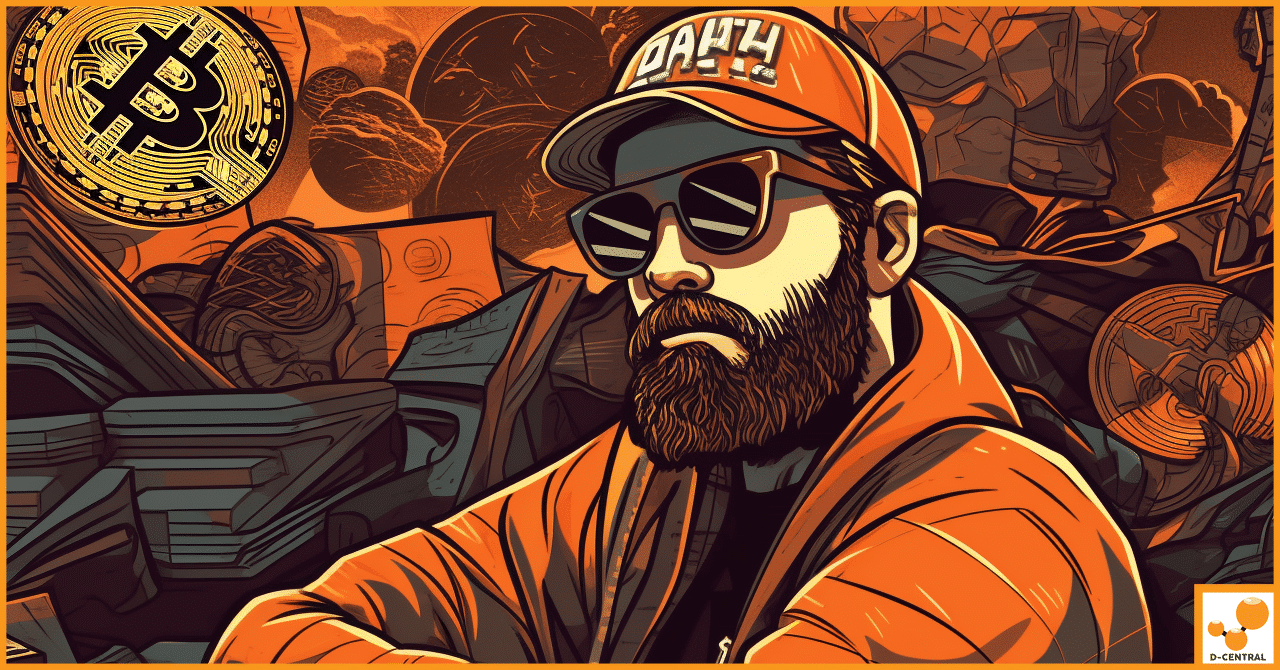
Bitcoin Unveiled: A Gritty Examination of the Dynamic Digital Asset Landscape
In the digital realm, Bitcoin has emerged as a revolutionary force that has redefined the concept of currency. Born out
4479 Desserte Nord Autoroute 440, Laval, QC H7P 6E2

Blockchain technology has rapidly evolved from a niche concept to a cornerstone of the modern digital world. At its core, a blockchain is a decentralized ledger that records transactions across multiple computers. This decentralization ensures that no single entity has control over the entire chain, enhancing transparency and security. The technology’s potential extends far beyond cryptocurrencies, with applications in various fields like finance, healthcare, and supply chain management.
Central to the functionality of any blockchain is its consensus mechanism, which is a system used to achieve agreement on a single data value among distributed processes or systems. Consensus mechanisms are critical in blockchain environments as they ensure all participants agree on the ledger’s state, even in the presence of faulty or malicious nodes.
In the realm of blockchain, two consensus models stand out for their widespread use and inherent features: Proof of Work (PoW) and Proof of Stake (PoS). PoW, the first mechanism used in blockchain, is renowned for its role in the operation of Bitcoin. It requires participants (miners) to solve complex cryptographic puzzles, consuming significant computational power and energy. PoS, on the other hand, emerged as an alternative aiming to address some of PoW’s limitations, particularly its high energy consumption. In PoS, the creation of new blocks is based on the validators’ stake in the network, typically the amount of cryptocurrency they hold.
However, despite its efficiency and lower energy consumption, PoS presents several security concerns when compared to the more established PoW model. While PoS is seen as a potential solution to the energy-intensive nature of PoW, these security issues raise critical questions about its suitability for maintaining blockchain integrity and trustworthiness. This article aims to delve into these concerns, providing a comprehensive understanding of why PoW is often considered a more secure option than PoS.
Concept of PoW
Historical Context in Bitcoin
Concept of PoS
Adoption and Perceived Benefits
In summary, PoW and PoS are two distinct approaches to achieving consensus in blockchain networks, each with its own mechanics, historical development, and implications for energy use and network security. While PoW is time-tested and known for its robust security, PoS offers a more energy-efficient approach but is still proving its effectiveness at a large scale.
Coin Consolidation and Network Control
Issue and Network Security Implications
Specific Attacks to PoS
These vulnerabilities highlight significant concerns regarding the security and reliability of PoS as a consensus mechanism, especially when compared to the more established and battle-tested PoW model. While PoS offers advantages like energy efficiency, the trade-offs in terms of security must be carefully considered.
Security Through Energy-Intensive Process
Contribution to Blockchain’s Immutability
Supporting Network Fairness and Decentralization
Role of Nodes and Miners
In summary, the PoW consensus mechanism’s strength lies in its ability to secure the blockchain against attacks through its energy-intensive mining process and to promote fairness and decentralization through the roles played by nodes and miners. These features have established PoW, particularly in Bitcoin, as a reliable foundation for secure blockchain operations.
Addressing PoW’s Energy Usage
Move Towards Renewable Energy Sources
Financial Motivations Behind PoW Mining
Impact on Network Security
In summary, the environmental and economic considerations of PoW mining are interconnected. The move towards renewable energy sources addresses some of the key environmental concerns, while the economic incentives play a crucial role in ensuring the security and viability of PoW as a consensus mechanism.
Growing Demand for Robust Security in Blockchain
Challenges in Adapting to New Threats
Innovative Approaches in PoW
As we reach the conclusion of our exploration into the security aspects of Proof of Work (PoW) and Proof of Stake (PoS), it’s evident that PoW holds distinct advantages in terms of security. The energy-intensive nature of PoW, while often criticized for its environmental impact, is a core element of its robust security framework. This mechanism demands substantial computational effort, which serves as a formidable barrier against attacks and fraudulent activities, ensuring the immutability and integrity of the blockchain.
However, the blockchain domain is not just about security; it’s also about finding the right balance between efficiency and security. While PoW excels in security, its efficiency, particularly in terms of energy consumption, is a significant concern. This is where PoS presents an attractive alternative with its lower energy requirements and potential for greater scalability. But as we’ve seen, PoS comes with its own set of challenges, particularly regarding security vulnerabilities like centralization risks and the “Nothing at Stake” problem.
The ongoing debate between PoW and PoS underscores a crucial need in the blockchain industry: continuous research and development to enhance blockchain security mechanisms while also addressing their environmental impacts. This endeavor is not just limited to choosing between PoW and PoS; it involves innovating new consensus mechanisms or improving existing ones to achieve the delicate balance between efficiency, environmental sustainability, and uncompromised security.
Therefore, it’s imperative to encourage further research and discussion in the blockchain community. By delving deeper into these mechanisms, exploring their implications, and continually innovating, the blockchain domain can progress towards more secure, efficient, and environmentally responsible solutions. The future of blockchain technology depends not just on its ability to secure digital transactions, but also on its adaptability and sustainability in a rapidly evolving digital world.
What is blockchain technology?
Blockchain technology is a decentralized ledger that records transactions across multiple computers, enhancing transparency and security. It has various applications in finance, healthcare, supply chain management, and beyond.
What are consensus mechanisms in blockchain?
Consensus mechanisms are systems used to achieve agreement on a single data value among distributed processes or systems in blockchain environments. They are essential for ensuring all participants agree on the ledger’s state, even in the presence of faults or malicious intent.
What are Proof of Work (PoW) and Proof of Stake (PoS)?
PoW and PoS are two consensus models used in blockchain. PoW requires miners to solve cryptographic puzzles using significant computational power, while PoS bases the creation of new blocks on the validators’ stake in the network.
Why is PoW often considered more secure than PoS?
PoW is often seen as more secure due to the computational effort and energy it requires for mining, acting as a deterrent to attacks. Compared to PoS, which has vulnerabilities like the “Nothing at Stake” problem and potential centralization, PoW provides robust protection against fraud and manipulation.
What are some environmental considerations for PoW?
The energy consumption of PoW has raised concerns about its environmental impact. However, there is a growing trend towards using renewable energy sources to power mining operations, mitigating some of these negative effects.
What are the economic incentives behind PoW mining?
Miners in PoW are financially motivated by rewards in cryptocurrency for adding blocks to the blockchain. These incentives ensure miners contribute to the network’s integrity, as dishonest practices could lead to a loss of rewards and a devaluation of their investment.
How can blockchain security adapt to new threats?
Blockchain security must continuously evolve to address the changing landscape of cyber threats. This includes adapting security measures for diverse applications and innovating new approaches for sustainability and efficiency.
What is the future of blockchain security?
The future of blockchain security involves balancing efficiency, environmental sustainability, and uncompromised security. Continuous research and development are crucial for exploring new consensus mechanisms or improving existing ones.
DISCLAIMER: D-Central Technologies and its associated content, including this blog, do not serve as financial advisors or official investment advisors. The insights and opinions shared here or by any guests featured in our content are provided purely for informational and educational purposes. Such communications should not be interpreted as financial, investment, legal, tax, or any form of specific advice. We are committed to advancing the knowledge and understanding of Bitcoin and its potential impact on society. However, we urge our community to proceed with caution and informed judgment in all related endeavors.
Related Posts

In the digital realm, Bitcoin has emerged as a revolutionary force that has redefined the concept of currency. Born out

In the ever-evolving landscape of technology, few developments have garnered as much attention as Huawei’s latest Kirin chip, featured in

The connection between Bitcoin and the Star Wars universe has long fascinated me. After years of exploration, reflection, and writing,